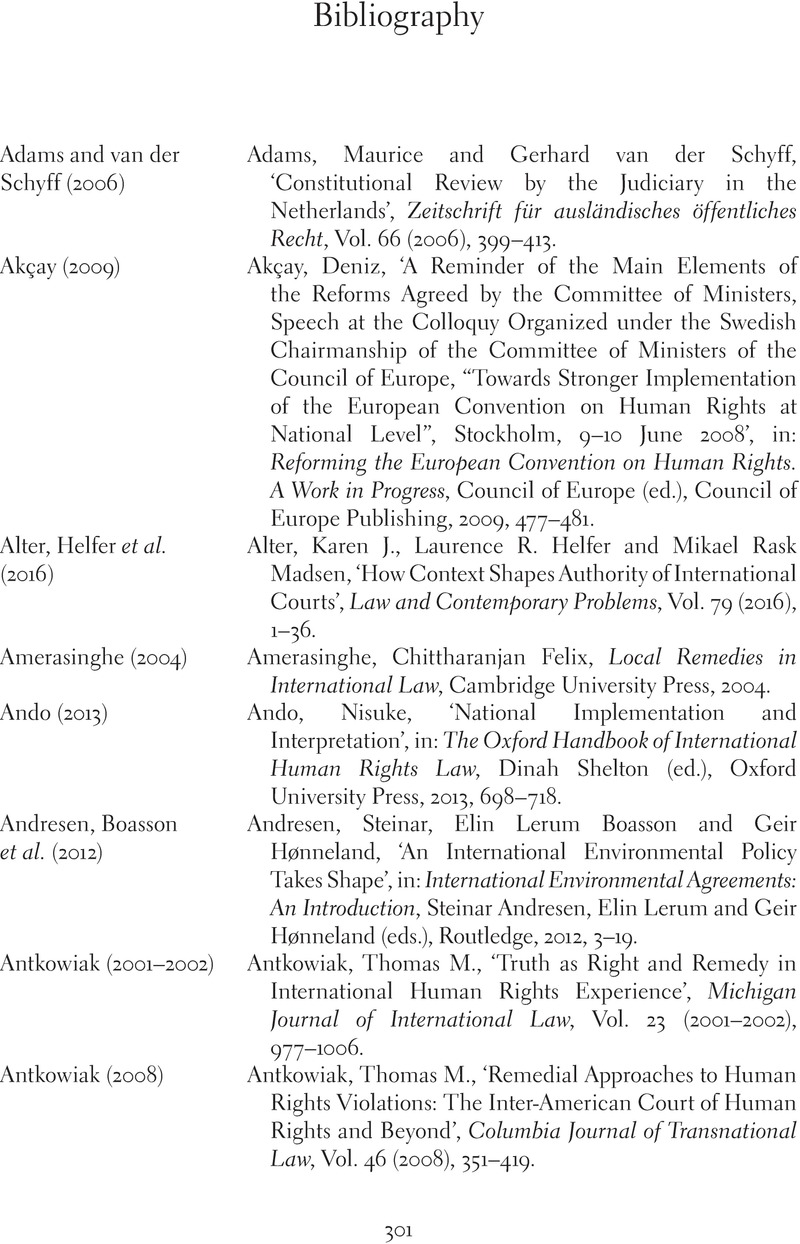 Effective Domestic Remedies and the European Court of Human Rights
Effective Domestic Remedies and the European Court of Human Rights Book contents
- Effective Domestic Remedies and the European Court of Human Rights
- Effective Domestic Remedies and the European Court of Human Rights
- Copyright page
- Contents
- Figures
- Preface
- Acknowledgments
- Citations of Case Law
- Abbreviations
- 1 Setting the Scene
- 2 Analysis and Selection of Case Law
- 3 The Requirement of Effectiveness in Abstract
- 4 Historical and Statistical Overview
- 5 Relationship with the Rule on Exhaustion of Domestic Remedies
- 6 Scope of Application
- 7 The Arguability Test
- 8 A Relative Standard
- 9 General Requirements and Principles
- 10 Access to Justice
- 11 Redress
- 12 A Normative and Contextual Reading
- 13 Conclusions and Recommendations
- Bibliography
- Index
- References
Bibliography
Published online by Cambridge University Press: 11 August 2022
- Effective Domestic Remedies and the European Court of Human Rights
- Effective Domestic Remedies and the European Court of Human Rights
- Copyright page
- Contents
- Figures
- Preface
- Acknowledgments
- Citations of Case Law
- Abbreviations
- 1 Setting the Scene
- 2 Analysis and Selection of Case Law
- 3 The Requirement of Effectiveness in Abstract
- 4 Historical and Statistical Overview
- 5 Relationship with the Rule on Exhaustion of Domestic Remedies
- 6 Scope of Application
- 7 The Arguability Test
- 8 A Relative Standard
- 9 General Requirements and Principles
- 10 Access to Justice
- 11 Redress
- 12 A Normative and Contextual Reading
- 13 Conclusions and Recommendations
- Bibliography
- Index
- References
Summary

- Type
- Chapter
- Information
- Effective Domestic Remedies and the European Court of Human RightsApplications of the European Convention on Human Rights Article 13, pp. 301 - 338Publisher: Cambridge University PressPrint publication year: 2022


